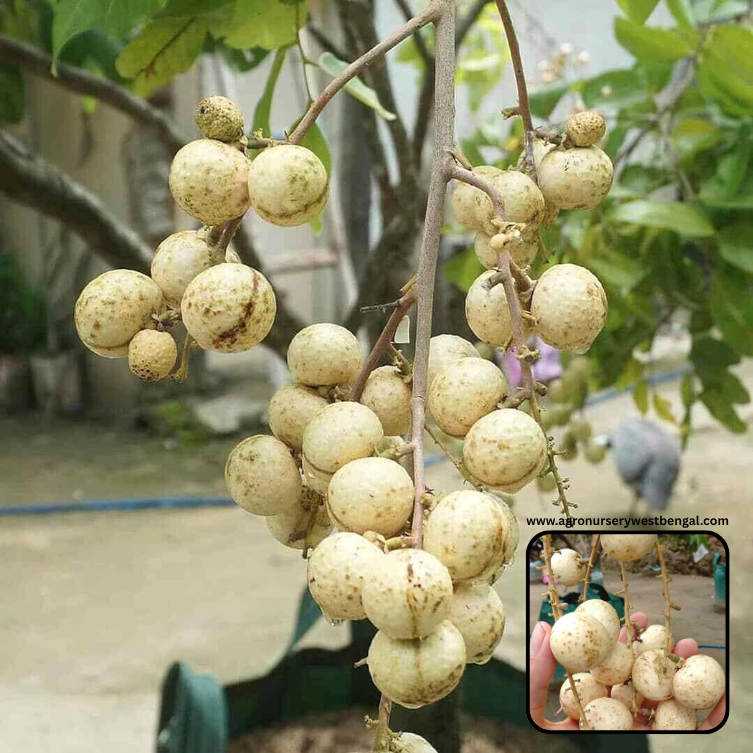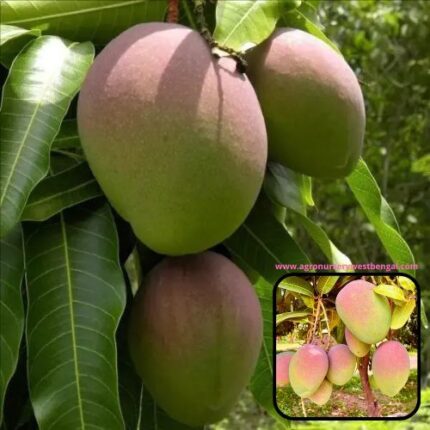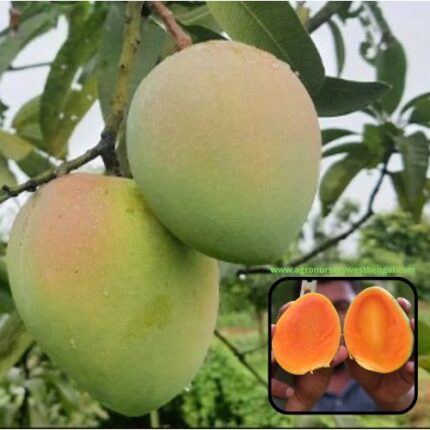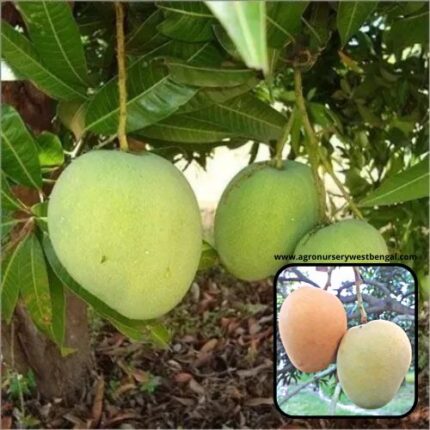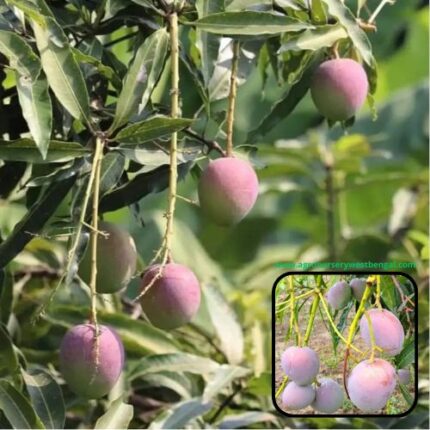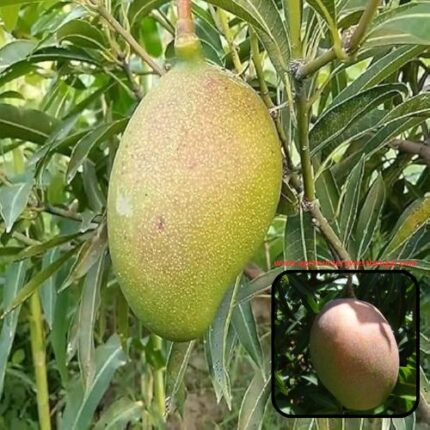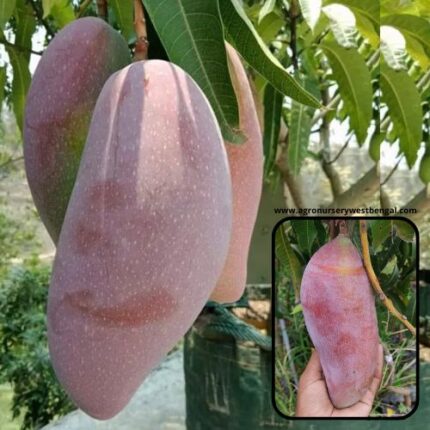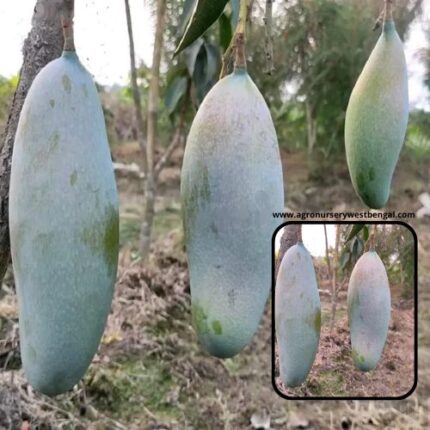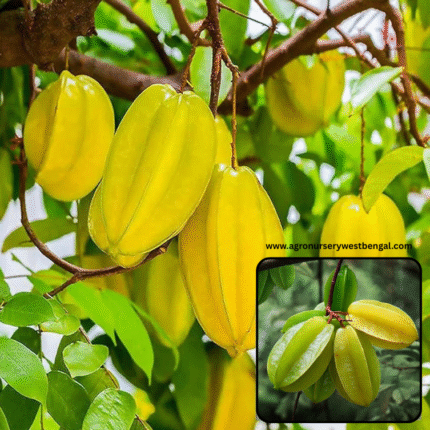
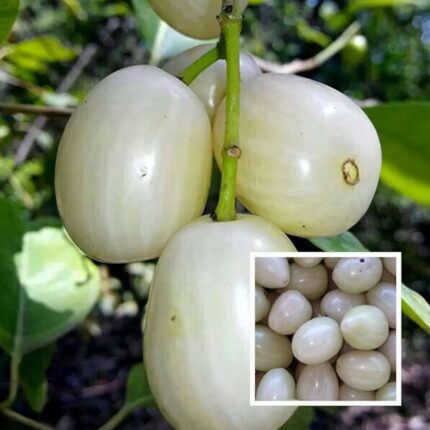
White longan fruit plants
₹2,599 Original price was: ₹2,599.₹1,899Current price is: ₹1,899.
When people refer to “white longan fruit,” they are typically describing a specific cultivar or characteristic of the longan (Dimocarpus longan), where the outer skin is lighter in color (ranging from whitish to very pale yellow-brown), and the inner flesh (aril) is a very translucent, almost pure white.
Here’s a more detailed description of white longan fruit:
1. The Fruit in General (Longan):
Botanical Family: Longan belongs to the Sapindaceae family, making it a close relative of lychee and rambutan.
Common Name: Often called “Dragon’s Eye” because the translucent white flesh around the black seed resembles an eyeball.
Overall Appearance: Standard longans are small, round to oval fruits, typically 1-3 cm in diameter, growing in drooping clusters. The skin is thin, leathery, and usually a light brown to yellowish-brown color, often with a slightly pebbled or rough texture, though smoother than a lychee. It’s easily peeled.
2. Specific Characteristics of “White Longan”:
Skin Color: This is the most defining feature. Unlike the typical light brown or yellowish-brown of common longan varieties, “white longan” cultivars have a peel that is notably lighter, often appearing off-white, very pale yellow, or a light greenish-white. This makes them stand out visually.
Flesh (Aril): The edible part of the longan is the aril, which surrounds the single, usually black, shiny seed. In “white longan,” this aril is remarkably translucent and an almost pure, milky white. It’s very succulent and juicy.
Size: Some “white longan” varieties are noted for producing fruits that are larger than average for longans, often around 2.5-3 cm in diameter, contributing to a better flesh-to-seed ratio.
Texture: The flesh is typically described as firm yet succulent, juicy, and sometimes slightly chewy or dry depending on the specific cultivar and ripeness. It’s largely fiber-free.
Flavor Profile: White longans are highly prized for their sweetness. They often have a rich, intensely sweet taste with subtle floral notes and a fragrant aroma. Some descriptions mention a hint of honey-like sweetness. The musky or subtly tart notes that can be present in some longan varieties might be less pronounced in the “sweet white” types.
Aroma: They usually have a fragrant and pleasant aroma, enhancing the overall eating experience.
3. Popular “White Longan” Varieties:
While “White Longan” might be a general term, specific cultivars known for these characteristics include:
Matalada: This is often referred to as a “white longan” variety, known for its larger fruit size, white skin, thick white flesh, and small seeds. It’s described as very sweet and fragrant.
Biew Kiew (or Beau Kaew): While its skin is usually a light brown-yellow, it’s highly regarded for its superior quality, large fruit, and excellent, perfumed flavor, which can sometimes be very sweet and have a somewhat translucent white flesh. It’s considered one of the best tasting longans.
Some Vietnamese varieties, like “Nhãn lồng” (Big longan) or “Nhãn tiêu da bò” (Ox-skin-pepper longan), are known for their large, thick, sweet flesh that can be very pale or white.
4. Culinary Uses:
Like other longan varieties, white longans are primarily enjoyed:
Fresh: Peeled and eaten raw as a refreshing snack.
In Desserts: Added to fruit salads, puddings, ice creams, and jellies.
Beverages: Used in juices, smoothies, and traditional Asian sweet soups (tong sui).
Dried: The flesh can be dried, intensifying its sweetness and creating a popular snack or ingredient in Asian cooking and traditional medicine.
5. Nutritional Value:
Longans, including white varieties, are a good source of:
Vitamin C: An important antioxidant that supports the immune system and skin health.
Potassium: Essential for maintaining fluid balance and blood pressure.
Dietary Fiber: Aids in digestion.
They also contain B vitamins (like riboflavin and niacin) and various minerals (magnesium, phosphorus, iron).
In essence, “white longan fruit” highlights varieties that offer a visually appealing lighter skin and a highly desired, intensely sweet, and translucent white flesh, making them particularly sought after for fresh consumption and culinary applications.

